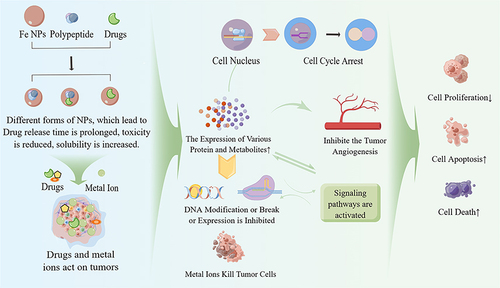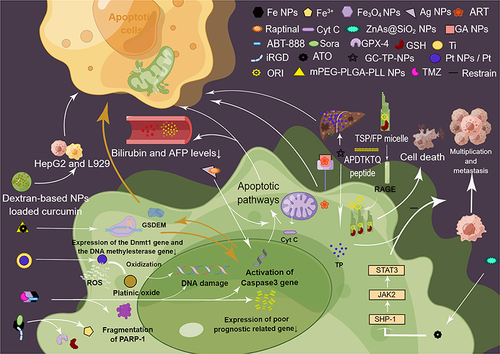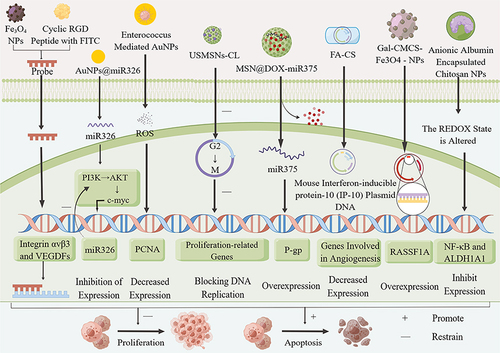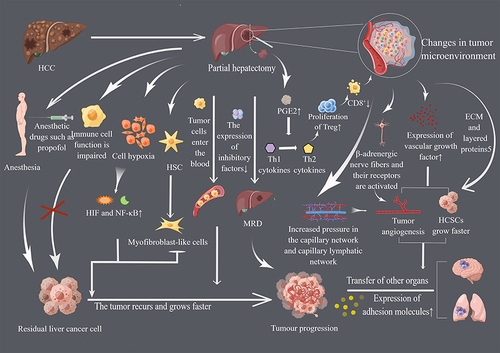Figures & data
Figure 1 Schematic diagram of NPs acting on tumor cells. Reprinted with permission from Figdraw (www.figdraw.com).

Figure 2 Schematic diagram of NPs and chemotherapy for HCC. NPs, nanoparticles. iRGD, Peptide chain of the amino acid sequence CRGDK/RGPD/EC. GSH, glutathione. PARP-1, poly (ADP-ribose) polymerase 1. ABT-888, PARP-1 inhibitor. Reprinted with permission from Figdraw (www.figdraw.com).

Table 1 Photothermal Therapy
Figure 3 Schematic diagram of Altered Gene Expression Levels of HCC. Reprinted with permission from Figdraw (www.figdraw.com).

Table 2 Combination Therapy and Other Treatment Modalities
Figure 4 Mechanisms of the development of postoperative residual carcinoma in HCC. Factors such as surgical anesthesia, altered immune status, surgical stimulation, tumor cell entry, inadequate resection, and altered tumor microenvironment provide survival opportunities for postoperative participating tumors and are important mechanisms for the development of postoperative residual carcinoma in HCC. Reprinted with permission from Figdraw (www.figdraw.com).

